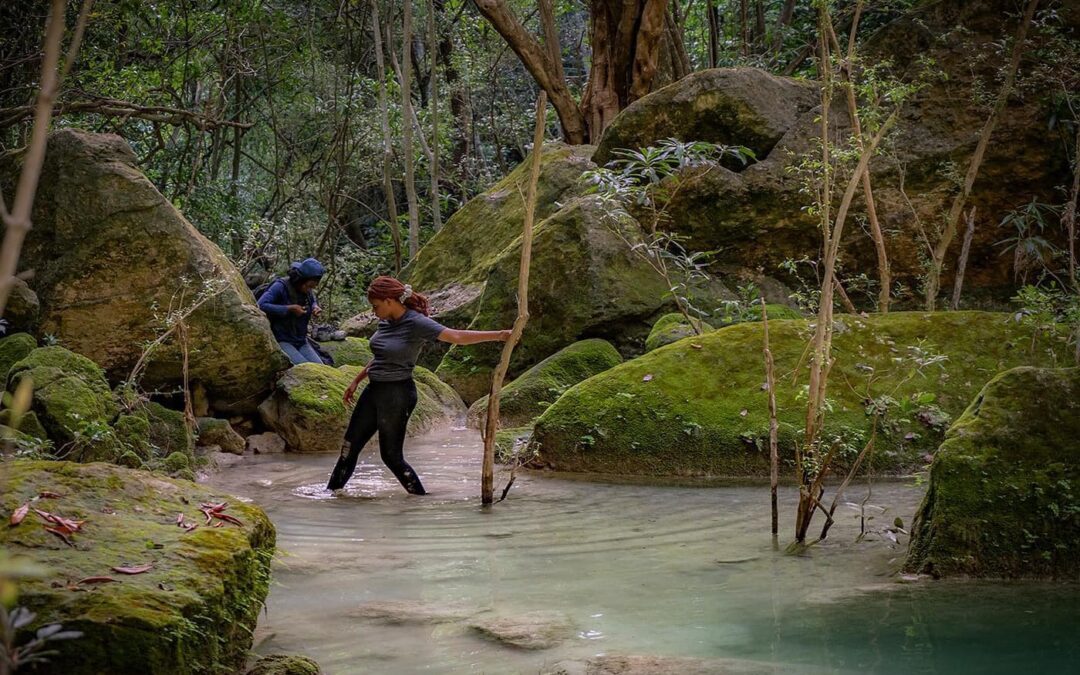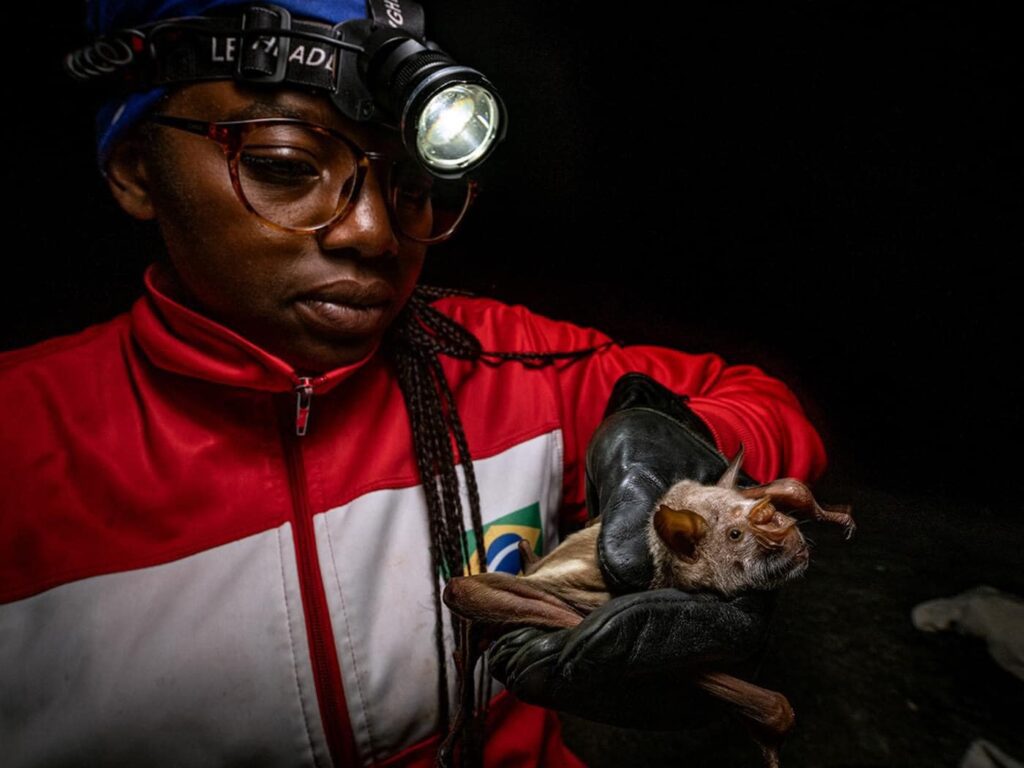Arcenia Chivale and Ana Gledis da Conceição exploring the deep, undisturbed old growth forest at the bottom of the Nhamarimba Gorge. Photo – Piotr Naskrecki
-Exploration team discovers spectacular limestone forests-
A team of Gorongosa scientists recently conducted a biodiversity survey of one of the most remote and breathtakingly beautiful areas of the Greater Gorongosa Ecosystem in the northern reaches of the Cheringoma Plateau, part of which is now a new Community Conservation Area.
According to expedition leader Piotr Naskrecki, it wasn’t easy to work in the area, which features dramatic, difficult-to-navigate terrain, but the rewards were huge.
“The old-growth forests that we explored deep in the Cheringoma gorges are some of the most spectacular and completely undisturbed forests found in Africa”, said Naskrecki. “Despite the many years I have spent working in Gorongosa National Park, I am still amazed every day with the breathtaking beauty of this place”.
The rich bat fauna of the region was a primary target of the survey. The team found large colonies of the giant Striped Leaf-nosed Bat (Macronycteris vittatus) and the Mozambican Long-fingered bat (Miniopterus mossambicus). Several species never before seen in Mozambique were also recorded by the team, including a cave-dwelling Tailless whip-scorpion (Euphrynichus amanica), and a large breeding population of the Silvery-cheeked Hornbill (Bycanistes brevis).
“Hats off to the fearless Mozambican scientists Ana Gledis da Conceição, Cesaria Huo, and Arcenia Chivale for working, literally, at the edge of the abys”, Naskrecki said.
Designating the Cheringoma Plateau (36,000 hectares east of the park) as a Community Conservation Area is the first stage of a planned corridor linking Gorongosa National Park with the Marromeu Reserve.
Two other areas earmarked for future Community Conservation Area status include:
-The Northern Rift Valley Conservancy (75,000 hectares north of the park), where a combination of ecotourism based on paleontological sites and sustainable hunting for community use may be possible; and
-The Pungue River Conservancy (20,000 hectares south of the park) which has strong wildlife ecotourism potential.
Together with the Cheringoma Plateau, the three designated areas represent 131,000 hectares (323,708 acres) of new conservancies and will help restore degraded ecosystems through sustainable agriculture, and forest regeneration by reducing fire frequency.
Text, photos and map courtesy of Piotr Naskrecki and Dr. Marc Stalmans.




Fantastic news and would love to see pics of the bats:)
É sempre um prazer indescritível saber notícias da Gorongosa e do fantástico trabalho científico desenvolvido por todas as equipas.
Nasci na Beira há muitos anos. Por isso sinto orgulho do vosso trabalho que contribui para a recuperação daquele que já foi o maior e a melhor reserva natural de África. Bem hajam e obrigado pelo vosso trabalho.
In a troubled and desperate world it is so encouraging to read of these great conservation initiatives.
I first visited Gorongosa 60 years ago. Congratulations all involved in this wonderful regeneration.